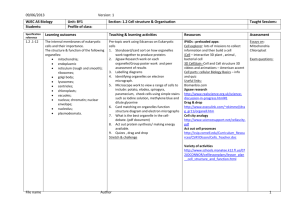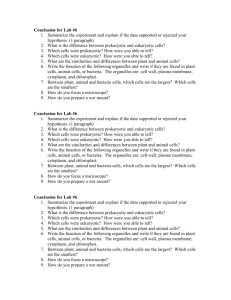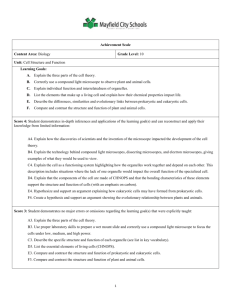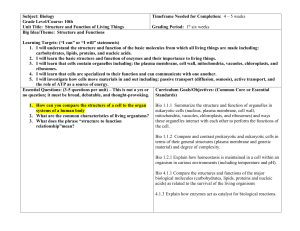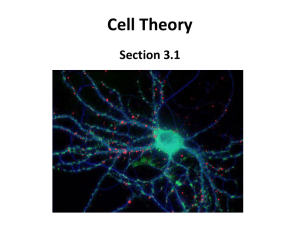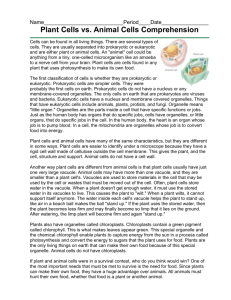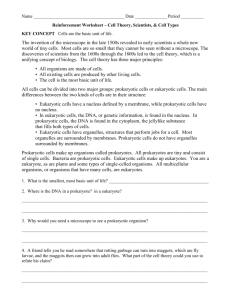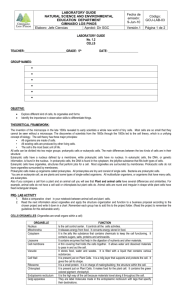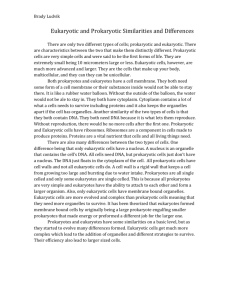Cell - Biology Junction
advertisement
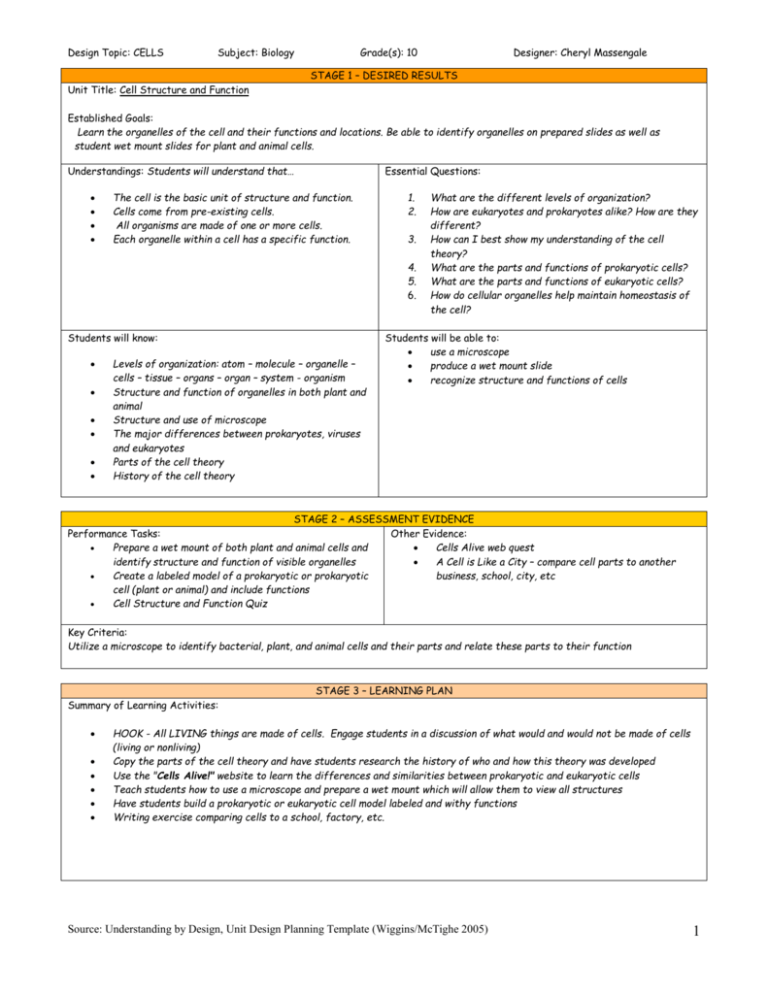
Design Topic: CELLS Subject: Biology Grade(s): 10 Designer: Cheryl Massengale STAGE 1 – DESIRED RESULTS Unit Title: Cell Structure and Function Established Goals: Learn the organelles of the cell and their functions and locations. Be able to identify organelles on prepared slides as well as student wet mount slides for plant and animal cells. Understandings: Students will understand that… Essential Questions: The cell is the basic unit of structure and function. Cells come from pre-existing cells. All organisms are made of one or more cells. Each organelle within a cell has a specific function. 1. 2. 3. 4. 5. 6. Students will know: Levels of organization: atom – molecule – organelle – cells – tissue – organs – organ – system - organism Structure and function of organelles in both plant and animal Structure and use of microscope The major differences between prokaryotes, viruses and eukaryotes Parts of the cell theory History of the cell theory What are the different levels of organization? How are eukaryotes and prokaryotes alike? How are they different? How can I best show my understanding of the cell theory? What are the parts and functions of prokaryotic cells? What are the parts and functions of eukaryotic cells? How do cellular organelles help maintain homeostasis of the cell? Students will be able to: use a microscope produce a wet mount slide recognize structure and functions of cells STAGE 2 – ASSESSMENT EVIDENCE Performance Tasks: Other Evidence: Prepare a wet mount of both plant and animal cells and Cells Alive web quest identify structure and function of visible organelles A Cell is Like a City – compare cell parts to another Create a labeled model of a prokaryotic or prokaryotic business, school, city, etc cell (plant or animal) and include functions Cell Structure and Function Quiz Key Criteria: Utilize a microscope to identify bacterial, plant, and animal cells and their parts and relate these parts to their function STAGE 3 – LEARNING PLAN Summary of Learning Activities: HOOK - All LIVING things are made of cells. Engage students in a discussion of what would and would not be made of cells (living or nonliving) Copy the parts of the cell theory and have students research the history of who and how this theory was developed Use the "Cells Alive!" website to learn the differences and similarities between prokaryotic and eukaryotic cells Teach students how to use a microscope and prepare a wet mount which will allow them to view all structures Have students build a prokaryotic or eukaryotic cell model labeled and withy functions Writing exercise comparing cells to a school, factory, etc. Source: Understanding by Design, Unit Design Planning Template (Wiggins/McTighe 2005) 1

